Let's assume that we have a table with two columns. The table contains data and our goal is to sort that table.
Assume our data looks like this, where y1 and y2 are the data in the columns.
You can produce that plot with MATLAB or GNU Octave.
% Simulate the model
[t,y] = ode45(@odefunc,[0 20],[1; -2]);
% Plot the simulation
close all
plot(t,y(:,1),'-r',t,y(:,2),'-b')
title('Solution of van der Pol Equation (\mu = 1) with ODE45');
xlabel('Time t');
ylabel('Solution y');
legend('y_1','y_2')
grid on
function dydt = odefunc(t,y)
dydt = [y(2); (1-0.1*y(1)^2)*y(2)-y(1) + 1];
end
If we look above the plot, we are going to se the data like this:
You can create that plot with this code:
% Plot 3D bar
figure
imagesc(y)
colorbar
Here we can see that the plot have a very much like a "table-look". My question is what algorithm is used when sorting the rows in the table so every row that looks almost the same, have it's own unique position in the table.
For example, if we have a table like this.
0 2 4
1 3 5
2 4 6
3 5 7
4 6 8
5 7 9
0 2 4
1 3 5
2 4 6
3 5 7
4 6 8
5 7 9
0 2 4
1 3 5
2 4 6
3 5 7
4 6 8
5 7 9
0 2 4
1 3 5
The code if you want to create that table.
j = 0;
rows = 20;
for i = 1:rows
disp(sprintf("%i %i %i", j, j+2, j+4))
j = j + 1;
if(j + 4 >= 10)
j = 0;
end
end
We can see that there are four rows of 0 2 4 and three rows of 5 7 9.
I want all rows 0 2 4 close to each other and all rows 5 7 9 close to each other. And.... 0 2 4 cannot be after 5 7 9 because then the plot would look terrible.
For example, assume that we begining with row 1, the first row 0 2 4. Then we are looking for the same rows of 0 2 4 and let's say we found four rows 0 2 4. Then we sort them.
0 2 4
0 2 4
0 2 4
0 2 4
Now next row would be 1 3 5 and we find two rows of 1 3 5. We sorting them.
0 2 4
0 2 4
0 2 4
0 2 4
1 3 5
1 3 5
After we have sorted for a while, we are going to have a table like this.
0 2 4
0 2 4
0 2 4
0 2 4
1 3 5
1 3 5
2 4 6
2 4 6
2 4 6
2 4 6
3 5 7
3 5 7
3 5 7
.
.
.
.
5 7 9
5 7 9
5 7 9
And now, we found 1 2 4, which is very similar to 0 2 4. So we need to place 1 2 4 close to 0 2 4, perhaps between 0 2 4 or 1 3 5 or after 0 2 4 or before 0 2 4. How do I even know that 1 2 4 should be placed close to 0 2 4? That's the issue!!!.
How can I sort that?
I need to do that in C-programming language because speed is most important here, but I think I will start to do it in GNU Octave. I'm pretty sure that there is a SQL-sorting algorithm I'm looking for.
Notice in practice, there are numbers, integers, 10-bit e.g values between 0-1023.

